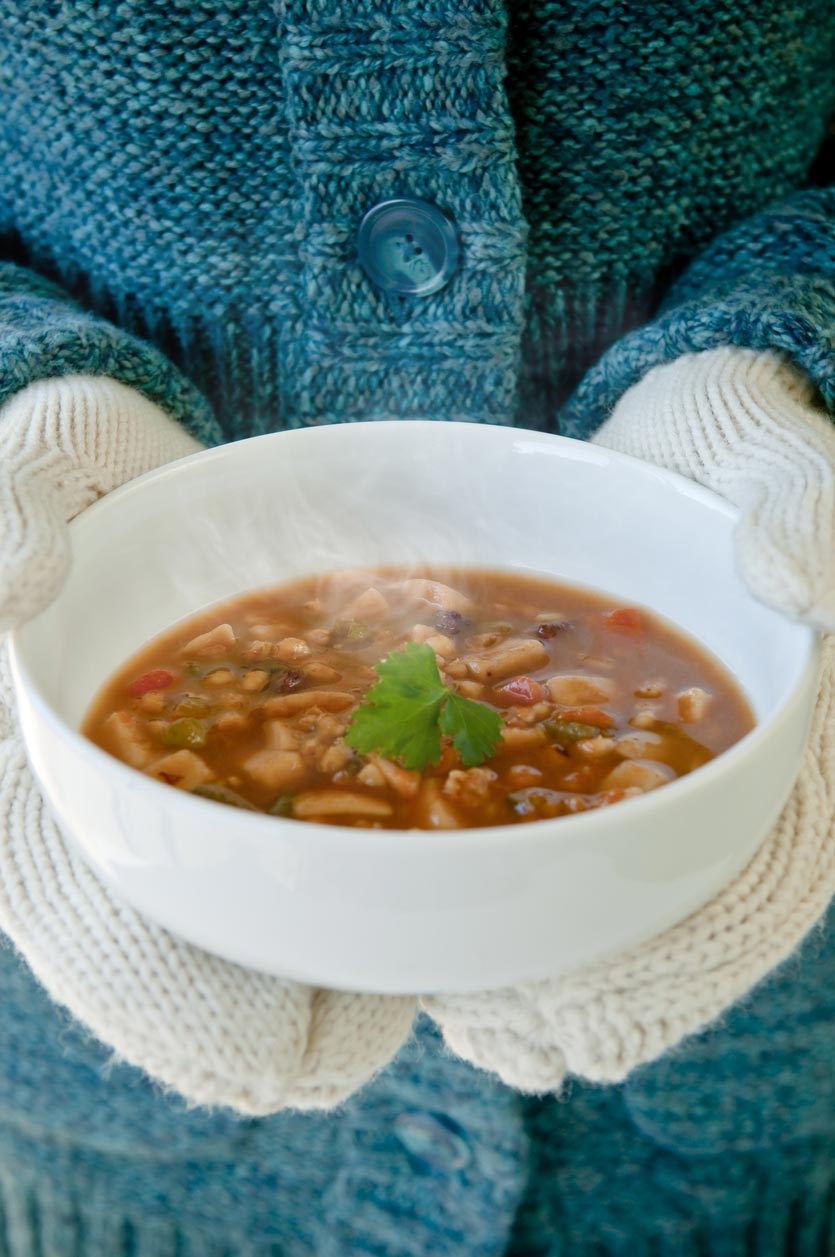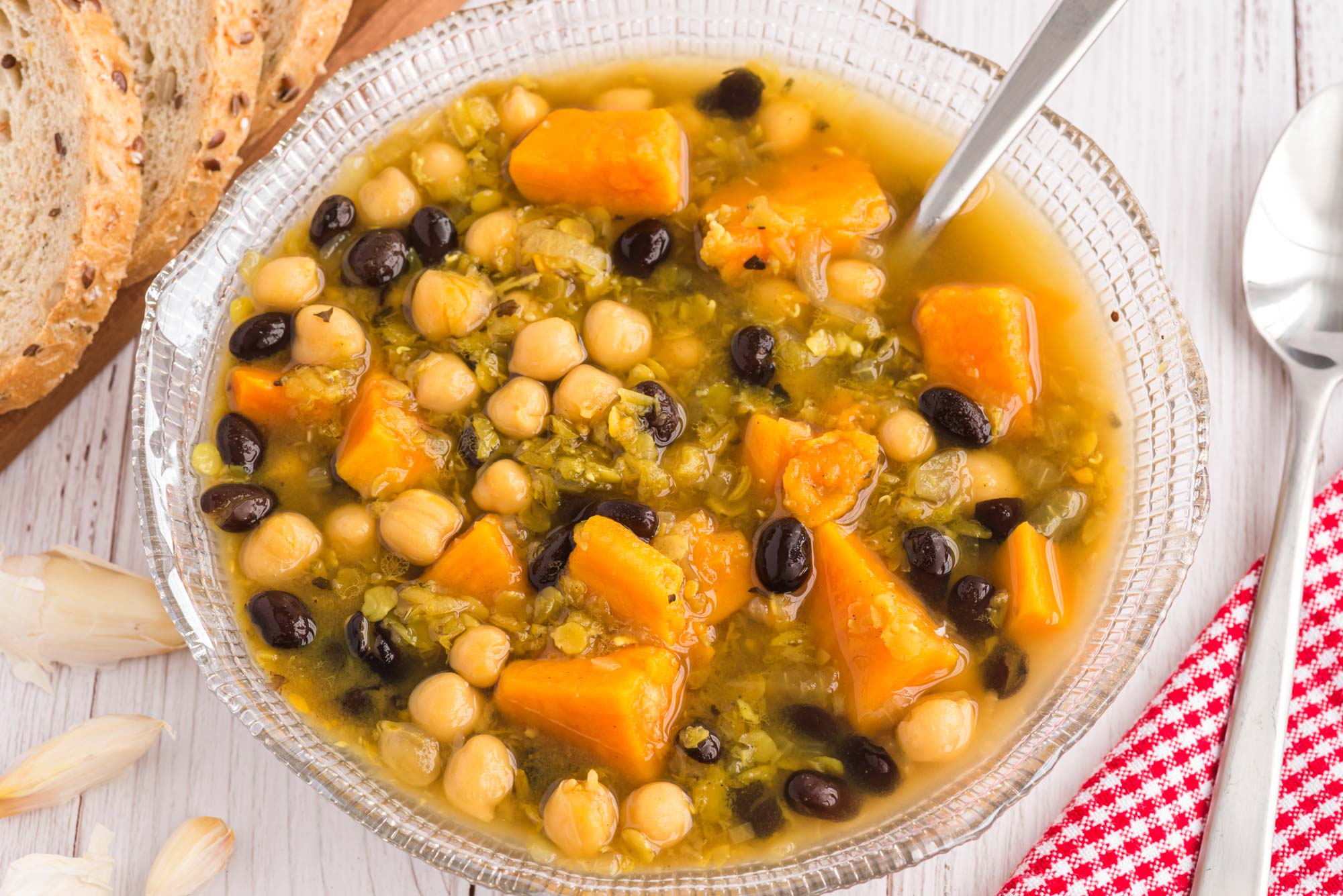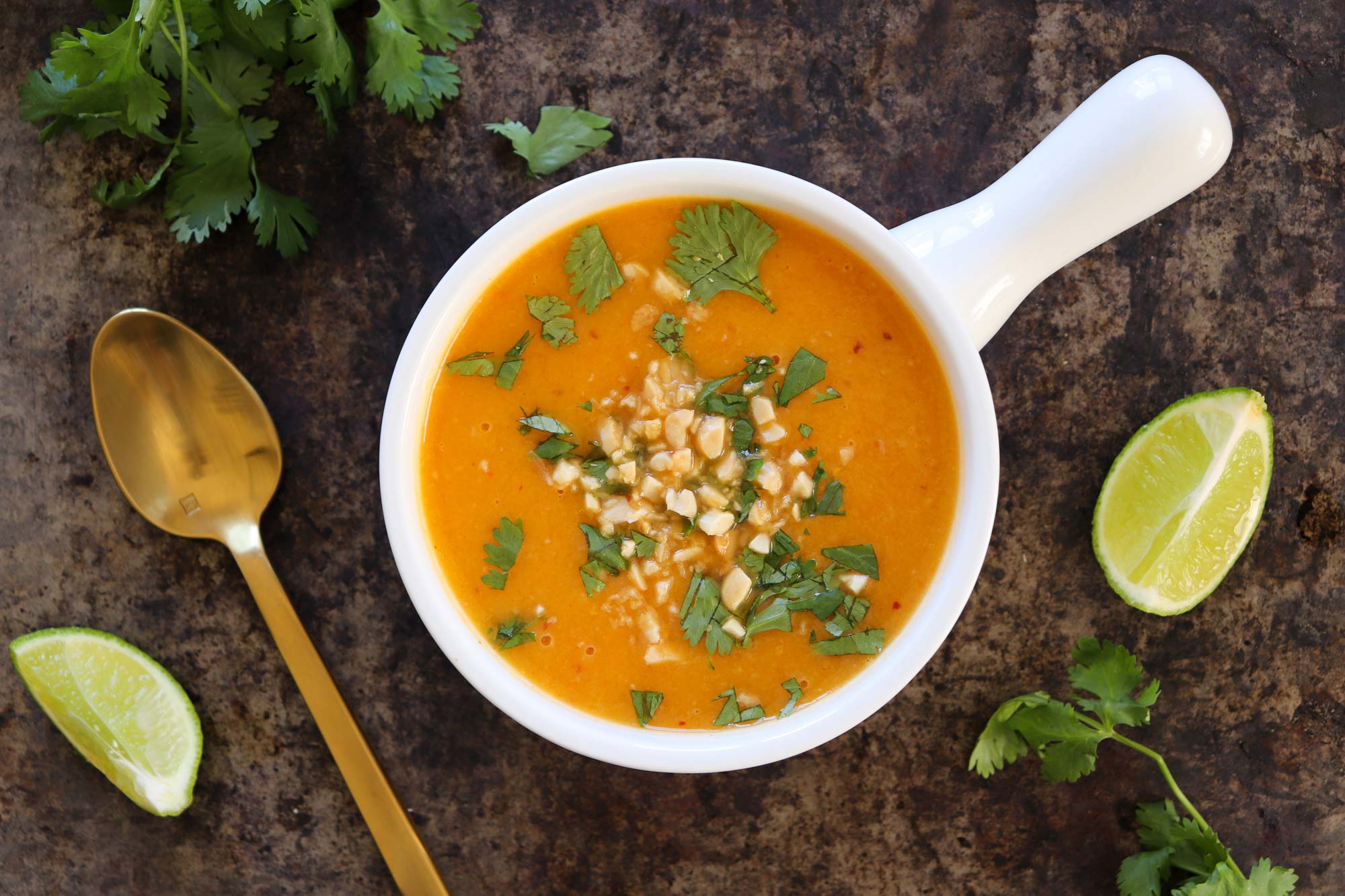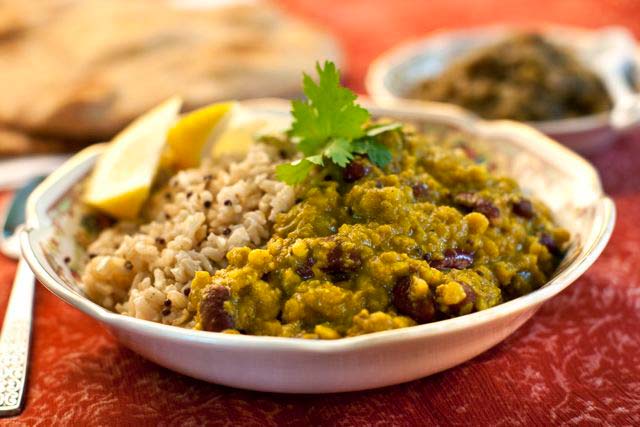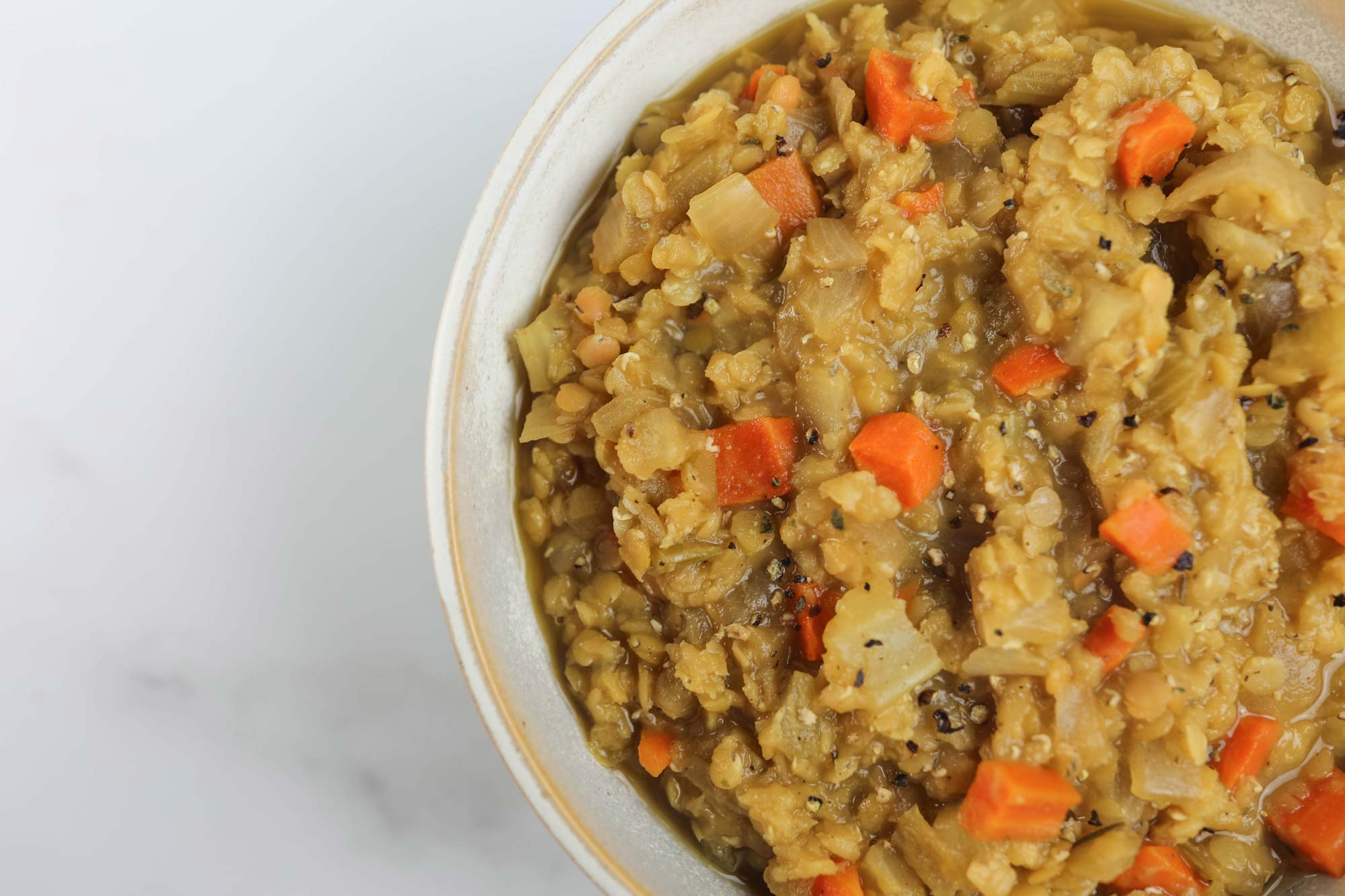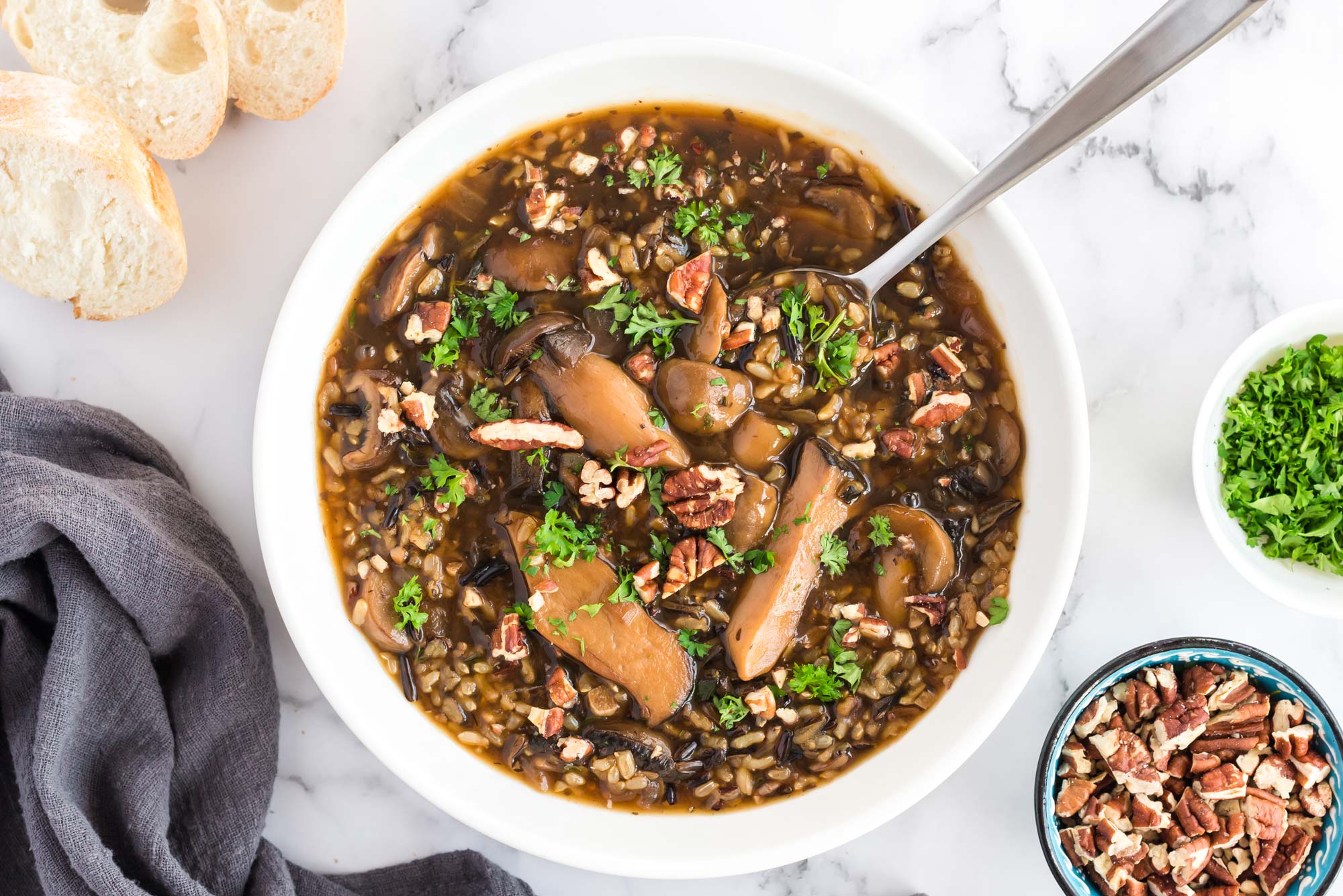Do you love to cook soup? If so, you might be a genius, at least according to someone who should know. Abraham Maslow, architect of the famous “Hierarchy of Needs,” once said that “a first-rate soup is more creative than a second-rate painting.” And vegan soups get to be especially creative, as we experiment and discover how to swap out meat stocks and creams — and to add plant-based texture, flavor, and creamy yumminess to the soups we make.
Whether you’re a dedicated vegan, curious, or just someone who likes to explore new tastes and cuisines, you can find much to love from vegan soups.
Of course, many of the world’s great soups are already vegan or vegan-friendly. Italian minestrone, Indian dal, Canadian split pea, and Japanese miso can all be easily made without the use of animal products. A few simple substitutions will produce vegan soups that are indistinguishable, or actually tastier, than their meat-based counterparts.
My goal in this article isn’t actually to share anything earth-shakingly new. Instead, I’d like to remind you of what you already know: soup is awesome. Especially plant-based soup! And you probably would be happier and healthier if you had more of them.
Soup and Weather
Soups are delicious any time of year, but many of them have a special place in our hearts when it’s cold out. Something about the steam rising from our place settings, the way our hands can cradle a bowl or cup, and the chunky, grounding root vegetables that often appear in winter soups. They all combine to warm us up, body and soul.
And some tasty soups can also serve to cool us down in the summer thanks to spicy ingredients that open up our pores and encourage sweating.
Not all soups are served hot, of course. Gazpacho and borscht are two famous examples of soups served cold. Sometimes a cold soup is as simple as blending ripe fruit with some water and adding spices and chunks of other stuff. Nothing is more refreshing on a hot summer day than, say, a chilled watermelon soup. You can even save on washing up by using the rind as a serving dish.
Versatile Vegan Soups
While pancakes are morning food, and sandwiches are typically lunch fair, soups are appropriate any time of day — for any meal. You can reheat a veggie or bean soup in the office microwave for a filling and nutritious lunch. Or start a soup in the slow cooker or electric pressure cooker in the morning and come home to a fragrant kitchen and hearty dinner after work. You can even eat soup for breakfast, as Japanese miso soup, Chinese congee, and Vietnamese pho all demonstrate.
A filling soup can be a meal all by itself. Think of pasta e fagioli, an Italian peasant soup meaning “pasta and beans,” which contains lots of veggies and herbs in addition to the very satisfying pasta and beans themselves. Or take a thick bowl of pea soup and add a chunk of organic peasant bread and a side salad, and you have a hearty meal.
Soup can also be an appetizer or side dish as part of a larger meal. Tomato soup, corn chowder, and creamy squash soup are all lighter soups than can impart flavor and variety to start a multi-course meal off on a warm and satisfying note.
Simple Swaps
Many soups are naturally vegan or plant-based, but it’s also really easy to swap in beans or lentils in soups that traditionally feature meat. Since soup traditionally cooked over low heat for hours and used up the lowest quality cuts of meat that weren’t ideal as main courses, the main purpose of the meat in many soups was for flavor rather than texture. You can approximate the body of a meat soup by varying how long you cook the legumes. You can cook black beans, so they maintain their individuality in a Mexican bean and sweet potato soup. Or cook them much longer for a creamy, Cuban black bean soup.
If you or your dining companions will really miss chunks of sausage in your minestrone or pasta e fagioli, you can always toss in some vegan sausage. The nice thing about having these plant-based meat analogs in soup is that you don’t need a lot; even two or three bites of Field Roast or Beyond Sausage per bowl will provide the mouthfeel and flavor that you might be looking for.
Using Veggie Stock Instead of Meat for Flavor
You can buy bouillon cubes, powder, or paste to impart the same hearty and umami flavor that meat stock provides. However, you’ll want to check the ingredients carefully to avoid excess sodium and hydrogenated oils. It’s actually very easy to make your own DIY bouillon from common spices and some nutritional yeast and powdered mushrooms. And you can also cook up soup stock from vegetables like onions, carrots, celery, mushroom, spinach, leeks, and any herbs you like. To save money, use kitchen scraps like the tops of carrots, onion peels, and the ends of celery. You can freeze the scraps as you generate them and then pull them to cook with when you’ve collected enough.
Here’s a primer on oil-free, vegan soup stock from Simple Vegan Blog. And for oil- and salt-free vegan bouillon that you can freeze in ice cube trays and pull out whenever you want to jumpstart a soup, check out this recipe courtesy of Plant-Based Instant Pot.
The Light and Heavy of Soup
Soups can be light or heavy. A light soup can be an easy and pleasant way to hydrate. If you’re looking to get your water in, focus on soups in the form of broths. These are mostly clear, with the water flavored by veggies, herbs, and spices.
Soups can also be so heavy that your spoon stands straight up in it — a feat apparently easier to accomplish than getting a broom to stand up all by itself. You can make your soup thicker by cooking it long enough to evaporate some water, by pureeing grains and starchy vegetables, or by using legumes such as lentils that naturally thicken as they cook and cool.
The Benefits of Eating Plant-Based Soups
There are more good reasons to include veggie-based soups in your diet than you can shake a ladle at. Hot soups warm you up and give you that nice, cozy feeling. And many of us have happy childhood memories of a family member demonstrating their love for us through soup. Additional plant-based soups are good for:
1. Fighting the Common Cold
Especially when you’re sick, soups can be wonderful sources of nourishment. They’re a great way to get lots of nutrients when you don’t feel like eating all that much. All that water helps to hydrate you almost without your noticing. And the steam and heat can relieve sore throats and decongest clogged sinuses and nasal passages. Add a little grated ginger to the soup to boost its nose-clearing power.
2. Getting Your Veggies In
Soups are also a great way to get your veggies. For veggie-phobes, soup can be an elegant and tasty way to hide carrots, celery, onions, potatoes, beans, lentils, and whole grains. Many folks who “don’t like” vegetables, enjoy consuming them in this stealth manner.
3. Making Your Life Easier
You don’t have to be an amazing chef to make amazing soup. Soups are among the most flexible and forgiving of meals. Unlike baking a bread or a casserole, which you can’t really mess with once you’ve stuck it in the oven, you can keep tasting soup and adding ingredients until you get something you like. They’re easy to make and can be very filling without costing a lot of money.
4. Aiding Weight Loss
Soups can also be helpful with weight loss. Because of all their water content, they can fill you up without necessarily providing a lot of calories. Unlike smoothies, which are less filling than eating the smoothie ingredients whole and therefore can cause you to overconsume, soups are actually more filling than if you just ate the ingredients not in soup form. The critical factor appears to be the fact that soups are generally hot, and therefore, we take our time to eat them. That gives our bodies time to send “I’m full” signals to the brain before too much food has gone down the hatch.
5. Adding in Nutrients
Soups can be extremely high in nutrients, depending on what ingredients you add. Greens, veggies, herbs, and spices can pack a nutritional punch in quantities that would be hard to consume in their raw or simply cooked form.
6. Using Up Produce
Also, soup can be the last stop on the produce train for veggies that have, not to put too fine a point on it, seen better days. Humans have been stretching their produce through soup for millennia. (Soup, archeologists suspect, was invented at least 20,000 years ago, soon after the invention of waterproof and fireproof cookware. Unfortunately, it probably took a couple thousand more years to invent the spoon.)
Droopy carrots and celery, older potatoes, wrinkly bell peppers, and wilted greens can revive in soup like nothing was ever amiss. As Russ Cooper wrote in MAD magazine, “Soup is food’s last chance to be eaten.”
5 Vegan Soup Recipes to Warm You from the Inside Out
Whether it’s the warming spices or the soup temperature, or perhaps a combination of the two, you’re certainly going to feel the warmth from these hearty and nourishing soups. Enjoy Thai Curry Butternut Soup or Fragrant Kidney Bean Lentil Dal when you’re craving Asian cuisine or the Wild Rice and Mushroom Stew when you’re looking for something earthy with umami flavors. Love intoxicating Moroccan spices? Then the Moroccan Bean Stew if for you. Finally, if you enjoy getting creative in the kitchen then you’re going to have fun making a coriander and star anise tea ball infusion that is used to flavor the Orange Lentil Soup with Anise and Coriander. Our suggestion? Try one each day of the week and freeze leftovers so you have warming soup for weeks ahead.
1. Moroccan Bean Stew
This stew offers a heaping serving of black beans, chickpeas, and lentils, along with yellow-fleshed sweet potatoes that simmer in a fragrant, intoxicating broth infused with cinnamon, cumin, coriander, ginger, fennel, and garlic. (Is your mouth watering?) Even though the ingredient list seems long, the stew is actually simple to make and well worth the effort. The Moroccan spices will warm your body throughout, from your head to your toes and everything in between!
2. Thai Curry Butternut Soup
Delicious, comforting, and bursting with flavor, this soup will leave you wanting more! Not only is it simple to make, but it’s also packed with nutrition from the onion, garlic, ginger, and butternut squash. Enjoy it during the fall and winter when butternut squash is at its nutritional peak.
3. Fragrant Kidney Bean Lentil Dal
Allowing the lentils and spices to cook together for a bit results in a soup that is fragrant and flavorful. If you love soups that are delicious and nourishing while creating the most beautiful aromas throughout your home then this dal is for you!
4. Orange Lentil Soup with Anise and Coriander
Coriander and star anise, the stars of this soup, are infused in a tea ball to create beautiful flavors and aromas. The soup has the lingering essence of these enchanting spices, and the tea ball can be left in or removed earlier in the cooking, depending on how much flavor you’d like to impart. Herbs and spices are often heroes in the nutrition world and this soup is no exception.
5. Wild Rice and Mushroom Stew
Simply thinking about wild rice and mushrooms in a stew is mouth-watering, don’t you agree? Not only is this earthy soup warm and comforting, but it’s also super nourishing and healing with the nutrient-packed mushrooms, herbs (oregano, parsley, and thyme) and spices (clove).
Give Us Our Daily Soup
Soup is one of the greatest gifts bequeathed to us by our ancestors, holding its own right up there with fire, stick figure drawing, and the phrase “Yabba Dabba Doo.” A good pot of soup is practically alchemical, transforming singular and ordinary ingredients into a new thing entirely. Soup has saved many items of produce from the compost or garbage bin and allows us to nourish our families and communities inexpensively and lavishly. And now that the modern era of plant-based innovation has blossomed, soups are being reinvented yet again to be healthier and more delicious than ever.
Tell us in the comments:
- What are your favorite plant-based soups?
- When and how do you like to eat soup?
Featured image: iStock.com/Foxys_forest_manufacture

